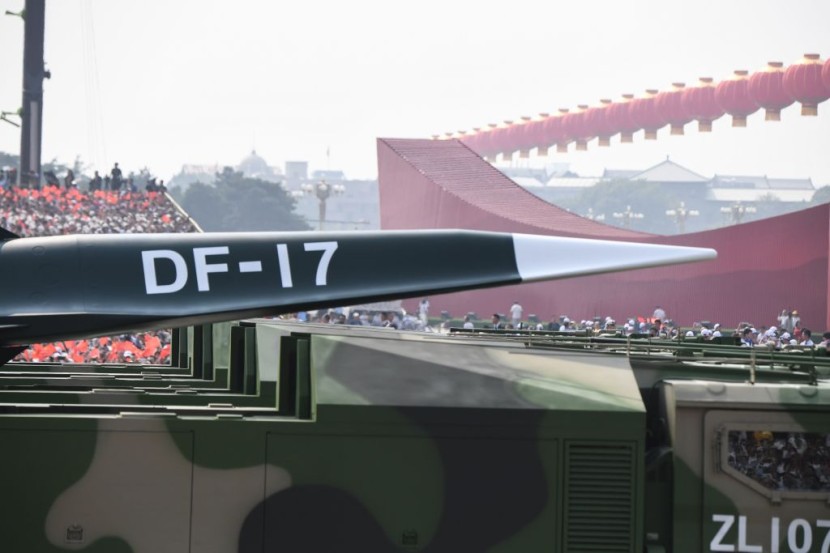China's advancements in hypersonic missile technology have triggered concerns among intelligence officials worldwide, who warn that these missiles, traveling at speeds of nearly 6,500 miles per hour, pose a significant challenge to interception efforts.
The DF-17 and its successor, the DF-27, have been identified as key assets in China's military arsenal, designed with the capability to evade traditional defense systems.
China's Hypersonic Missile Threat

The particular concern is the potential threat posed to aircraft carriers, including the UK's HMS Queen Elizabeth and HMS Prince of Wales, which could be targeted by these high-speed missiles from distances of up to 5,000 miles. The gravity of the situation has prompted urgent action from countries like the UK, Australia, and the United States, who comprise the AUKUS alliance and are racing to devise effective countermeasures.
Referred to as 'Hypersonic Glide Vehicles' (HGVs), these weapons operate on trajectories that make them exceptionally challenging to intercept, even compared to intercontinental ballistic missiles. One official emphasized the significance of speed in contemporary warfare, stating that "speed is the new stealth." China's prioritization of hypersonic capabilities has propelled it to the forefront of this technology, with intelligence indicating significant advancements made during the 2020s.
The AUKUS alliance recognizes countering this threat as a top priority, with a strategic focus on neutralizing the missile delivery systems rather than solely targeting the missiles themselves. This approach acknowledges the difficulty of intercepting hypersonic missiles directly and highlights the importance of preemptive action against launch facilities.
China is making progress in this area, while the United States and Britain do not yet have operational hypersonic missiles; the latter are still in the testing stage. China has advanced technologically in this field faster than Russia, despite the Russians using less advanced HGVs in battles like the Ukraine, as per Daily Mail.
Read Also: 'Popular Conservatism:' Liz Truss Announces New Political Movement Ahead of British Polls
Ambitions Prompt Race For Defense
Adding to the complexity of the situation is the potential for these missiles to carry nuclear payloads, raising concerns about the escalation of conflict, particularly in regions like the South China Sea. Analysts warn that Beijing could leverage its hypersonic capabilities to target US and UK naval assets in the area, posing a formidable challenge to regional security.
The ultimate objective of China's hypersonic missile program appears to be the targeting and neutralization of aircraft carriers, underscoring the strategic significance of these weapons. With defensive strategies still under development, the AUKUS alliance faces a race against time to mitigate the threat posed by China's hypersonic arsenal.
Being capable of defending against hypersonic missiles becomes a distinctive trait of modern warfare as tensions rise and technology advances. These changes have far-reaching effects on geopolitical dynamics and the global balance of power, going beyond military strategy, according to BNN Breaking.
Related Article: Orbán Boycotts Parliament Session to Slow Sweden's NATO Bid
© 2025 HNGN, All rights reserved. Do not reproduce without permission.








